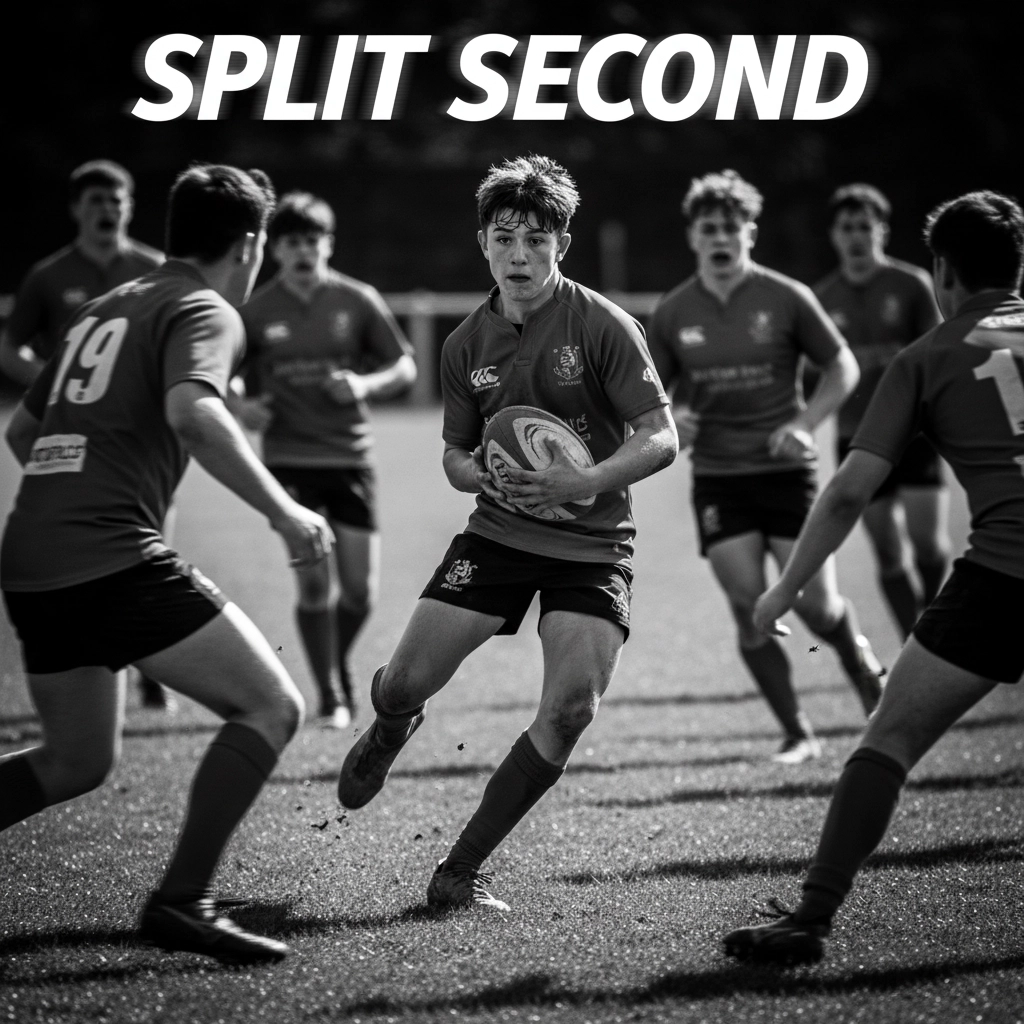The Need for Less Structure and More Decision-Making in Rugby
- Zoek Web Design
- Nov 10
- 5 min read
Rugby is chaos. Beautiful, intelligent chaos. And yet, walk onto most training fields today, and you'll see coaches trying to eliminate every ounce of that chaos with rigid patterns, predetermined plays, and over-structured systems that tell players exactly where to stand, when to pass, and what to do next.
Here's the problem: when you remove the chaos, you remove the soul of rugby.
At SAFFA RUGBY, we believe rugby thrives when players are free to read situations, make split-second decisions, and trust their instincts. The game belongs to the players, not the coaches drawing up elaborate patterns on a whiteboard.
The Problem with Over-Structured Rugby
Let's be honest about what happens when coaches over-structure the game. Players stop thinking. They become robots executing predetermined sequences, waiting for the next command instead of reading what's actually happening in front of them.

I've seen it countless times: teams that look polished in practice but fall apart the moment the opposition does something unexpected. Why? Because their players have been trained to follow patterns, not to think.
Over-structuring creates several critical problems:
Reduced field awareness. When players are focused on remembering their role in Pattern X or Formation Y, they're not scanning the field for opportunities. They miss the obvious overlap because they're too busy getting to their predetermined position.
Lack of adaptability. Rugby changes every second. The moment you commit to a rigid structure, the defense adapts, and suddenly your beautiful pattern becomes predictable and ineffective.
Suppressed creativity. Some of rugby's most memorable moments come from players doing something completely unexpected: the offload that shouldn't work, the kick that creates chaos, the support line nobody saw coming. Over-coaching kills these moments.
Passive decision-making. When coaches make all the decisions, players learn to wait for instructions instead of taking ownership of their performance.
This approach might create the illusion of organization, but it doesn't develop rugby players. It develops followers.
Why Player-Centric Coaching Works
The alternative isn't chaos for chaos's sake. It's intelligent player empowerment. It's coaching that develops thinkers, not just athletes who can execute plays.
In a player-centric environment, coaches become guides rather than dictators. We create scenarios where players must assess, decide, and act. We let them make mistakes and learn from them. We ask "What did you see?" instead of telling them what they should have done.

This philosophy recognizes a fundamental truth: the best rugby emerges when players feel ownership of the game. When they trust their instincts. When they're confident enough to take calculated risks and adapt to whatever the opposition throws at them.
Research consistently shows that players develop better decision-making skills when they're given freedom within structure. They learn to read defensive patterns, identify mismatches, and exploit opportunities that no predetermined pattern could anticipate.
Decision-Making as the Foundation
Every moment in rugby is a decision point. Pass or carry? Short ball or long ball? Kick for territory or run it back? Support inside or outside?
Teaching players to make these decisions independently requires training that reflects this constant decision flow. This means moving away from static drill work and toward game-based scenarios where players must read, react, and choose.

The process starts simple: 2v1 situations where attacking players must identify the best option. Progress to 3v2, then add defensive complications. Create pressure. Force quick decisions. Let players experience the consequences of their choices and learn from them.
This isn't about removing all structure: it's about building intelligent structure. Players need to understand fundamental principles: how to create and exploit space, when to go forward versus when to recycle possession, how to support effectively. But within those principles, they need the freedom to choose their path.
As players develop this decision-making ability, something beautiful happens. They start to see the field differently. They anticipate rather than react. They create opportunities instead of just executing predetermined plays.
Creativity: The Heart of Rugby
Rugby is at its most beautiful when it's unpredictable. When players use vision, skill, and instinct to create something that wasn't there before. This creativity shouldn't be a luxury reserved for the most talented players: it should be central to how we develop everyone.
Encouraging creativity means celebrating the unexpected. The offload in contact that creates a line break. The support line that appears from nowhere. The kick that puts the defense in an impossible position.

But creativity only flourishes in environments where players feel safe to try things. Where making a mistake while attempting something positive is valued over playing it safe and predictable.
This is why we need to shift away from coaching that punishes players for thinking differently. Too often, coaches shut down creative plays because they don't fit the system. We need to ask ourselves: are we developing players who can win games, or players who can execute our patterns perfectly?
SAFFA RUGBY's Commitment to Player Development
At SAFFA RUGBY, we're committed to developing complete rugby players: athletes who can think, adapt, and lead on the field. Our approach prioritizes understanding over memorization, creativity over conformity, and decision-making over pattern execution.
We design training sessions that challenge players to solve problems. We create scenarios where there's no single right answer, forcing players to evaluate options and commit to decisions. We encourage experimentation and view mistakes as learning opportunities.

Most importantly, we trust our players. We give them the tools and principles they need, then step back and let them apply those tools in their own way. We develop leaders, not followers.
This approach takes more time and patience than drilling patterns, but the results speak for themselves. Players who learn to think develop confidence that carries over into every aspect of their game. They become adaptable, creative, and resilient.
The Path Forward
The future of rugby development lies in embracing the game's inherent unpredictability rather than trying to control it. We need coaches who are comfortable with controlled chaos, who can provide guidance without removing player agency.
This means designing training that reflects game reality. Creating pressure situations where players must make decisions quickly. Encouraging communication and collective problem-solving. Celebrating players who think differently and try new things.
It means recognizing that our job as coaches isn't to create perfect pattern executers: it's to develop intelligent rugby players who can read the game, make decisions under pressure, and adapt to whatever challenges they face.
Rugby is a player's game. The sooner we acknowledge that and adjust our coaching accordingly, the sooner we'll see players reaching their full potential. Players who don't just know how to play rugby: they understand it, feel it, and can shape it with their decisions.
At SAFFA RUGBY, we're committed to this philosophy. We're developing the next generation of rugby players who think for themselves, trust their instincts, and play the game with the creativity and intelligence it deserves.
Because at the end of the day, rugby isn't about perfect execution of predetermined patterns. It's about intelligent athletes making split-second decisions in a beautiful, chaotic, unpredictable contest.
And that's exactly how it should be.

Comments